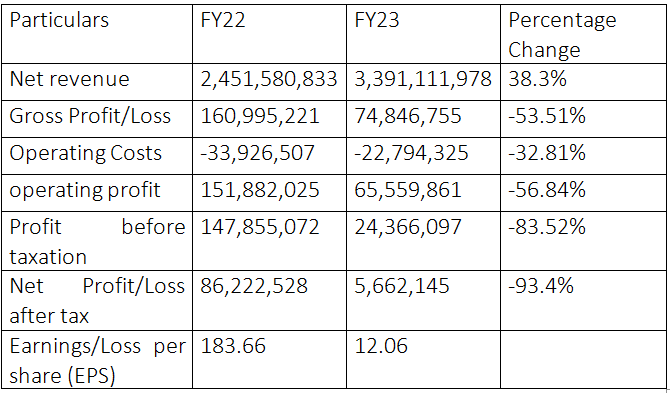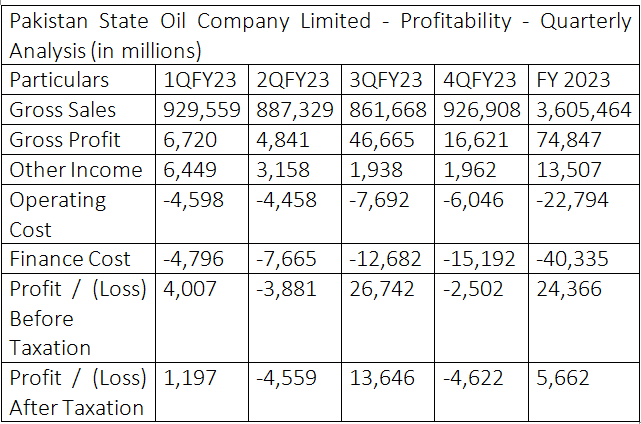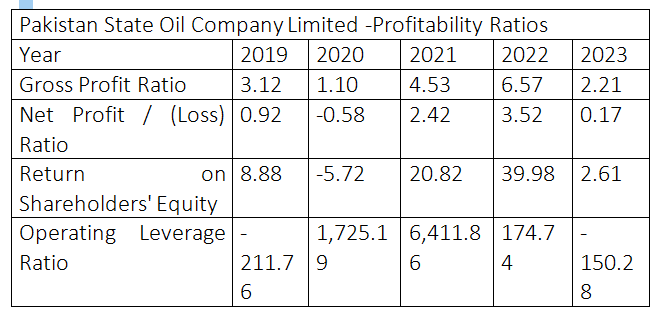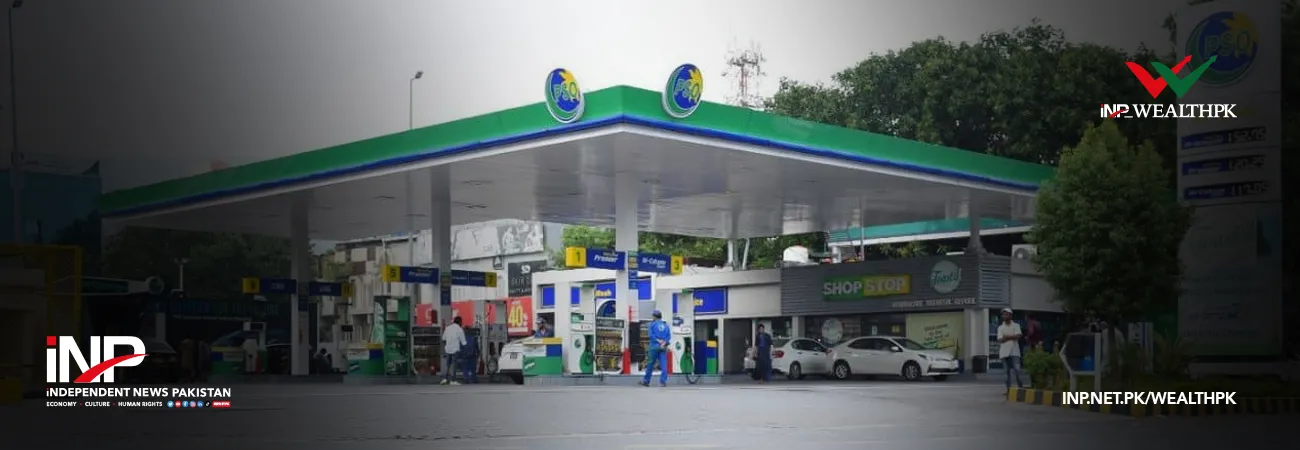INP-WealthPk
Shams ul Nisa
Pakistan State Oil Company Limited’s revenue grew by 38.3% to Rs3.39 trillion during the fiscal year ending on June 30, 2023 from Rs2.45 trillion in the earlier fiscal. However, the gross profit sank by 53.51% to Rs74.8 billion in FY23. The company attributed this decline to the lower sales volume of furnace oil due to a shift in the energy mix by the government and a decrease in white oil sales due to a decline in industry volumes. The company saw its operating costs decline 32.81% to Rs22.79 billion from Rs33.9 billion in FY22 because of efficient and strict cost management. As a result, the operating profit fell from Rs151.8 billion in FY22 to Rs65.5 billion in FY23.
The company announced Rs24.4 billion profit-before-tax at the end of FY23, which was 83.52% lower than Rs147.8 billion in FY22. Furthermore, during FY23, the net profit plunged to Rs5.6 billion from Rs86.2 billion in FY22, posting a significant decline of 93.4%. This was driven by higher finance costs and the imposition of super tax. Additionally, the earnings per share dropped significantly to Rs12.06 in FY23 from Rs183.66 in FY22.
![]()

Quarterly analysis
Pakistan State Oil Company’s gross sales reached Rs3.6 trillion in FY23, with the highest sales of Rs929 billion recorded in the first quarter. The company achieved the highest gross profit of Rs46.6 billion in 3QFY23, which resulted in a Rs74.8 billion gross profit at the end of the year. The main factors that drove the fluctuating trend in the gross sales and profit were the higher sales prices on account of the rise in international oil prices. The other income of the company exhibited a declining trend from Rs6.4 billion in 1QFY23 to Rs1.93 billion in 3QFY23, before improving slightly to Rs1.96 in 4QFY23. During 1QFY23 and 2QFY23, the company observed greater income because the power sector paid interest on late payments.

The company’s operating costs stood at Rs22.79 billion and finance costs Rs40.33 billion at the end of the year. The rise in finance costs was because of a rise in interest rates and borrowing. The company observed profit-before-tax of Rs4 million in 1QFY23 and the highest of Rs26.7 billion in 3QFY23. However, in 2QFY23 and 4QFY23, the company posted a loss-before-tax of Rs3.88 billion and Rs2.5 billion, respectively. A similar trend was observed in the net profit.
Profitability ratios analysis
The gross profit ratio of the company fell from 3.12 in 2019 to 1.10 in 2020, before going up to the highest of 6.57 in 2022. In 2023, it reduced to 2.21 mainly because of an unfavourable price regime and a reduction in overall industry's sales volumes. The net profit ratio varied over the period as the company observed a net loss ratio of 0.58 in 2020 as a result of the economic implications caused by the Covid-19 pandemic. A similar trend was followed by the return on shareholders’ equity ratio as it remained negative at 5.72 in 2020. However, the maximum return on the shareholders’ equity of 39.98 was recorded in 2022.

The operating leverage ratio calculates the ratio between fixed and variable costs, and higher operating leverage ratio means a company is capital-intensive. The company’s operating leverage was recorded negative in 2019 and 2023. However, it remained positive in 2020, 2021, and 2022 with the highest of 6,411.86 registered in 2021.
Liquidity ratios analysis
The company’s cash-to-current liabilities ratio improved gradually from -0.06 in 2019 to 0.03 in 2023. However, the cashflow coverage ratio, which measures a company's ability to pay off its total debt using cash from operations, remained less than 1 over the years, with negative values in 2019, 2022, and 2023. This shows that the company failed to generate cash from its operations to cover its debt.

The company’s current ratio remained above 1.2 over the years, indicating a positive liquidity position. This means that the company was able to easily cover its current liabilities using current assets. The quick ratio was quite stable over the period, ranging from 0.76 to 1.1.
Credit: INP-WealthPk













